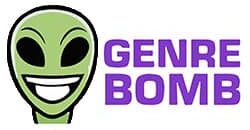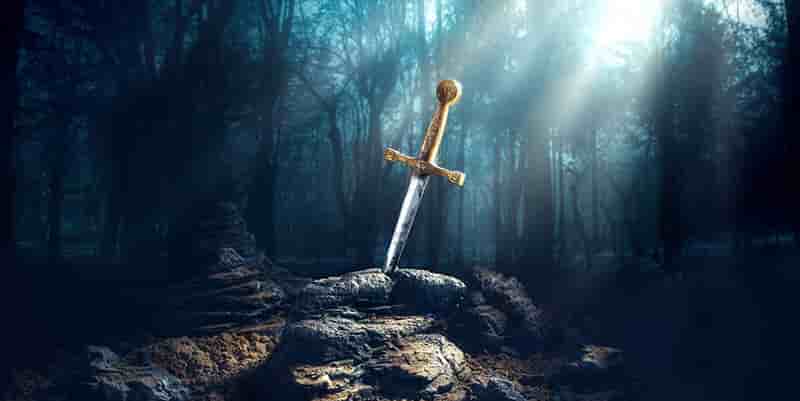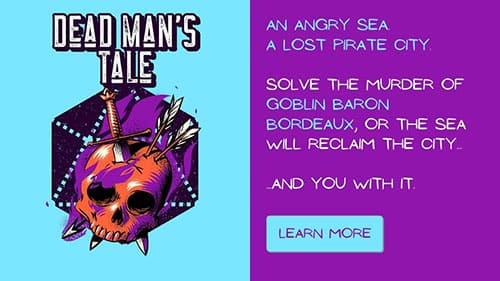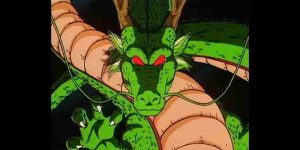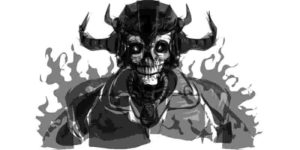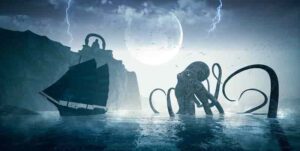The fantasy genre is far richer in variety than most people realize, styles include:
- High Fantasy
- Fairy Tales
- Mythic Fantasy
- Dark Fantasy (remember Grimdark sub-sub)
- Science Fantasy
- Prehistoric Fantasy
- Contemporary Fantasy (remember Urban sub-sub)
- Swashbuckler
Magic, swords, dragons, monsters, all of these elements create the genre known as fantasy. The inspiration for this story type comes from the deep imagination of mankind and going back as far as possible. As soon as we could think abstractly as a species, we’ve entertained each other with incredible stories, provoking awe.
In my opinion, this is the true origin of fantasy. Maybe it pulls from the ancient world, where mankind walked alongside giant beasts and stared into a wondrous night sky.
Even today, the universe is mysterious. Stories help us make sense of our reality, our fate in this world. By now, our imaginations have generated many styles of the fantasy genre. Check it out.
High Fantasy
Let’s start with the classics. High fantasy is the genre most people think of when the word fantasy is spoken. Elves, dwarfs, dragons and general medieval surroundings are the building blocks of high fantasy.
Traditionally, this genre was spawned by the granddaddy of fantasy fiction, J. R. R. Tolkien. Many readers, both young and old, credit The Hobbit and Lord of the Rings with their introduction into imaginative fiction. This could be from the original books or more recent movies. The dark lord invading the kingdoms of Middle Earth with an army of orcs is quite familiar to most of us.
Several elements of Tolkien’s life went into the inspiration of Middle Earth. He was a linguist obsessed with ancient European languages and Nordic mythology. So, naturally, he created an entire language for the mythological elves he read about. In fact, elves, dwarves, heroes, giants and dragons are all concepts drawn directly from Nordic culture. Blend that with Celtic legends and King Arthur’s court, and we have the modern high fantasy genre.
Generally, these stories take place in alternate worlds with countries and kingdoms and continents the reader has never heard of. Ironically, this isn’t exactly what Tolkien had in mind with Middle Earth, but that’s a grey area for another article.
The Legend of Zelda is a fantastic modern example of high fantasy. The races that inhabit this world all seem to be vaguely elven. Link is a hero with virtue, a courageous youth from a simple village. His people seem to embody the wood elf stereotype, while princess Zelda of Hyrule gives off more of a high elf vibe (complete with majesty and magic). Sprites, merfolk, desert-dwelling brigands named Gerudo, swords, sorcery and all manner of fantastical creatures inhabit this beloved series by Nintendo.
Fairy Tales
Deciding between fairy tale or high fantasy as my first blurb was a difficult choice. Even people who can’t stand wizards know a fairy tale or two, mostly thanks to Disney. Fairy tales lean toward a younger audience (even the creepy Grimm versions of the past). More often than not, these stories teach a lesson through the characters’ actions and the overall plot.
These stories have a rich oral tradition, coming from multiple cultures in northern Europe and even Russia. Famously, as I mentioned earlier, The Brothers Grimm, named Jacob Ludwig Karl and Wilhelm Carl, were German academics who collected these stories as a study in folklore. After publishing this collection in the 19th century, it quickly became a staple in Western culture.
Cinderella, Snow White and the Seven Dwarves, and Hansel and Gretel are all classic examples of fairy tales, complete with magic, witches and young heroes. Once again, these stories include scary elements, which seems to be an important factor in the fantasy genre overall. Whether the lessons in these stories are about true love or being wary of strangers presenting gifts, there is always something to learn.
A relatively modern fairy tale movie that is often overlooked is 2005’s The Brothers Grimm. The concept of this film is based around the real collectors of folklore, splashed with humor and elements of the stories they gathered. In the film, protagonists Will and Jake Grimm (an Americanized version of the names) are actually charlatans who claim to exercise supernatural creatures. Experts in folklore, they are surprised to find themselves caught up in a real story of curses and witchcraft.
Mythic Fantasy
As I mentioned, the original form of what we now know as fantasy was largely inspired by the mythology of northern Europe. However, these concepts of mystique and fantastical beings are not only found in the north.
I could list every individual culture’s influence on our modern view of fantasy, and boy would that be a long list, but I’ll keep this part of the list reigned in with three major examples.
Related Posts:
Most Famous Dragons in Movies and TV: What They Mean
| Best Grimdark Movies and Shows
|
Greco-Roman
Moving slightly away from the Nordic/Celtic influence, Greece and Rome have some of the most well-known mythologies of the western world. Gods, monsters, sorcerers, oracles and, of course, heroes with extraordinary abilities.
These stories tend to be about the conflict between gods and man, fate and free will. Heroes of this mythology often have a touch of the divine, gifted as a son (or daughter) of Zeus, mixed with the blood of mortals. Zeus had it bad for mortal women.
Most of know of Hercules, who seems to be just as popular now as he was thousands of years ago. We know some of the pantheon and Mt Olympus. Many of us even know a good deal about The Odyssey.
There are, however, more recent examples of fiction based on this old religion. The young adult series Percy Jackson and the Olympians is a more recent example of the characters, tropes and influences of Greek mythology. Percy (or Perseus) is a demigod hero, much like our beloved Hercules, and is the son of Poseidon. Writer Rick Riordan took a classic mythological trope (a hero as the son of Zeus) and tweaked it ever so slightly. He then transported the setting to modern America and came up with something quite original.
I would be remiss if I didn’t include this influence on comic books. Mainly, the DC brand of comics borrowed greatly from this classic mythology. Wonder Woman is a direct example, a daughter of Zeus and a mighty warrior. Aquaman, of course, is the king of Atlantis, a story brought to us by the Greek philosopher Plato, and Shazam pulls directly from the Greek pantheon for his powers.
Middle Eastern/Arabian
Genies, flying carpets, magic wishes and dark sorcerers can also be found in Arabian tales.
In the west, we’ve had a complicated relationship with this culture. However, the stories found in compilations such as Arabian Nights have fascinated western audiences for centuries. Classic examples such as Aladdin and Ali Baba and the Forty Thieves introduced us to perilous adventures through the deserts of the Middle East, encountering lost temples and strange magic along the way.
The voyages of Sinbad the Sailor have also been a rich piece of this genre. Everything from old adventure movies to made-for-tv shows to an animated feature in the 90s have borrowed from this creative legacy. The original story itself plays out much like the Arabian Nights collection: set up as a conversation between two people where one tells the other stories of adventure and magic. Except, it has a touch of naval exploration similar to stories like The Odyssey.
East Asia
Personally, I’m a fanatic of Japanese storytelling. This is a culture that loves genre fiction and places a unique style and point of view into the art.
Of course, their own tradition is steeped in stories of magic. Forest spirits, phantom-like Yokai, shapeshifting foxes, uniquely horrifying monsters and other phenomenon have been introduced to the west from a long history of storytelling. Instead of knights, we have samurai. Tropes like legendary, blind swordsmen and shadowy ninjas (yes, they are fiction… at least the way you’re thinking of them) have enriched fantastical storytelling across many mediums.
The anime world gives strong examples of Japanese fantasy. Studio Ghibli cracked open this genre for the world with movies such as Princess Mononoke and Spirited Away, presenting Japanese mythology in sweeping, epic tales of nature and spirituality.
Chinese influence on the genre is also worth noting, especially in Hong Kong. In many ways, China and Japan share mythological elements, similar to the way European cultures borrow and extrapolate folklore from each other. Not to mention, China loves adding a splash of kung fu into their fantastical stories, and I’m here for it. A relatively recent example would be Jackie Chan and Jet Li’s Forbidden Kingdom (2008). If you don’t know about the Monkey King (based off the Buddhist story Journey to the West), you’re in for some fun with his mythology.
Dark Fantasy
Vampires, werewolves, haunted castles and supernatural beings haunt the world of dark fantasy. In some ways, all fantasy has a little darkness, as I mentioned before. Witches, at least the old hag type, have always scared me to death. But I still love engaging with them in fiction. If the trials our heroes go through aren’t scary, do they really matter to us? In my opinion, facing fear on paper translates to facing fear in real life.
But I digress.
There’s a certain romance to this genre, maybe because of the vampires. I don’t necessarily mean the “people falling in love” kind of romance, though that certainly happens often in dark fantasy. In fact, you could argue that paranormal romance falls into this category, but that’s not really what I want to focus on. This romance is of fallen nobility or the full moon or ancient castles.
Most recently, Netflix’s Castlevania anime falls squarely in this category. Based on the video game franchise of the same name, this series pits vampire hunter Trevor Belmont against Dracula himself. The setting places us just outside of the medieval age and cranks its vampire villain up to ten. This isn’t just a guy with sharp teeth—he’s a demon, a dark god from another era.
Grimdark
When we truly mix in elements of horror with our fantasy, we find that the gloves come off—metaphorically speaking. Somewhere along the line, the reality of bloodshed and horror come to life with this genre. Gore, terror, sex, all of the horror tropes can fit within a fantasy model quite easily.
George R. R. Martin’s Song of Ice and Fire fits this genre, giving us a brutal look at medieval life in a world of monsters and dark magic. Of course, in his books the monsters aren’t always supernatural: mankind can be just as monstrous as any ice zombie or dragon. Seriously, binge a couple of episodes of the HBO Game of Thrones series and you’ll feel all the squeamish horror of a modern slasher.
The Witcher series, written by Andrzej Sapkowski, has been adapted successfully into a video game franchise that sparked the Netflix series of 2019. I could almost fit this into the mythic category with all the Eastern European folklore weaved in. I might have fit it into the fairy tale category as well with all the subtle nods to classic stories. For instance, one short story within the first book is clearly inspired by Beauty and the Beast, with a noble cursed to live alone in his castle as a furry monster. However, the series is most definitely Grimdark to its core, following the terrifying exploits of our monster hunting antihero, Geralt of Rivia, and the horrifying creatures he must face.
Related Posts:
Scariest Sea Monsters in World Mythologies
| How to World Build: A Guide to Immersive Worlds
|
Science Fantasy
I know, I know, I covered this genre in my science fiction list, but it’s awesome and totally counts. I’ll use different examples for this list, perhaps leaning more toward the fantasy side of things.
This subgenre isn’t as new as you might think. Early 20th century writers have dabbled in stories of kingdoms across space. In fact, it was popular in pulp magazines such as All-Story Magazine, which published the science fantasy staple A Princess of Mars. This planetary romance even has a splash of western elements, taking place on a desert planet with a hero who served in the Civil War. This early novel was the introduction of John Carter, who saw a film adaptation in 2012.
John Carter is a classic hero, a knight in shining armor, so to speak. He’s trained in swordsmanship (something that was still relevant in the Civil War), horseback riding and, of course, marksmanship. The man defines courage in a strange land, a common fantasy trope in itself.
Also, I’ll cite one of my all-time favorites: He-Man and the Masters of the Universe. This kids’ show from the 80’s took inspiration from these old planetary sword and sorcery novels, maybe even a little from comics as well (as in early Thor). As an alter ego, He-Man walks around as young Prince Adam, royalty of Castle Grayskull. When trouble is near, he calls on the power of his magic sword to transform himself into a muscular, superhuman hero, He-Man. Characterized by his superhuman strength and lack of clothing, He-Man is essentially Conan the Barbarian in space.
A mixture of laser-blasting allies and an arch-nemesis named Skeletor, a skull faced sorcerer, this franchise was a fantastic blend of fantasy and sci fi for a whole generation.
Prehistoric Fantasy
Speaking of Conan the Barbarian, fantasy settings can be pushed far into the past as well, as far back as civilization goes.
History is full of mythologies that look back to a golden age of ancient history, 10,000 + years ago before mainstream science suggests we started. Stories of Atlantis carry a sense of wonder and awe. Could there have been a much more advanced civilization that was wiped off the earth from a cataclysm, leaving modern humans to start over from scratch? Personally, I think yes. Maybe not advanced in a flying cars sort of way, but certainly with stonework, agriculture, astronomy and navigation.
If you think about it, there are still humans living as hunter/gatherers today, in the modern age. Perhaps most people in the past lived this way, with certain pockets of civilization appearing around the globe.
In fact, researchers such as Graham Hancock have compiled books full of evidence for such civilizations. Ancient stone works now underwater show signs of precision carving. The sphinx of Egypt shows signs that it was crafted before Egypt was a desert. In fact, the erosion beneath the sphinx points toward its creation in a lush jungle.
This sort of vibrant setting makes for a unique sword and sorcery tale, which is where Conan comes in.
Created in the 1930’s by author Robert E. Howard, Conan the Barbarian is set in a time just after the fall of Atlantis in a pseudo-historical age called the “Hyborian Age”. This muscular warrior was based on early Europeans, perhaps ancestors of the Celts, and wandered the world in search of adventure, glory and girls. Battling ancient monsters and evil wizards, his tales have been modernized in cinema, most famously with Arnold Schwarzenegger in the 80’s.
Fire and Ice.
Set in the age of cavemen, this movie is a classic, high adventure tale of a hero in search of a kidnapped princess. Evil Queen Juliana and her son Nekron send glaciers throughout the world with elemental magic, essentially causing the Ice Age and pushing other humans closer toward the equator. When the kingdom of the Firekeep is tricked, Queen Juliana’s raiders kidnap King Jarol’s beautiful daughter Teegra.
Through her own cunning, Teegra escapes her captors and meets a young warrior, Larn, who recently survived an onslaught to his village by Nekron’s forces. When the bad guys catch up to them, they retake Teegra, forcing Larn to team up with the mysterious Darkwolf to raid the Ice Castle and free the princess.
If you’re into art or animation, this film is a spectacle.
Contemporary Fantasy
Is it time to mention Harry Potter yet? Yes, yes, it is.
Contemporary Fantasy brings all the wonder and magic of the fantasy genre into the modern age. Of course, it’s all hidden under a magic illusion or secret societies or alternate dimensions, but bet you can bet it’s there. This genre seems to be by far the most popular subgenre of fantasy, often bringing readers into the fold that don’t care for lofty language or castle intrigue or long walks through Middle Earth.
As I mentioned, Harry Potter and the Sorcerer’s Stone launched J. K. Rowling’s ultra-popular series into existence. Rowling’s world seems to separate into some sort of vague magical realm alongside the real world, where schools of magic and enchanted creatures exist outside of the ordinary. The wonder of this series that captivated me as a child was the dream of escape. For Harry, this was escaping an abusive family life. For me, it was escape from the mundane. Either way, the thought of secretly being a wizard and receiving an invitation to a magical world was intoxicating.
Artemis Fowl is another popular contemporary fantasy series with a similar set up. That is, a young prodigy sets off into a magical world that lies beyond the boundaries of the ordinary. However, this kid is a bit more criminal than the kind and heroic Harry Potter. In fact, he’s on the opposite end of the spectrum, the other side of the coin, so to speak. He comes from money, he kidnaps a fairy, and his family has dealings with the Russian Mafia. Fortunately, he isn’t awful and grows into a likable antihero with wit and charm.
Urban Fantasy
Oh hey, another sub-sub. I generally place urban fantasy into a grittier slot than other forms of contemporary fantasy. My first two examples were solid young adult examples, but the “urban” style leans toward older adults. Technically, it can include supernatural creatures lurking around our world, or a completely different world, like Middle Earth, but modern.
Jim Butcher’s The Dresden Files is one of my favorite series. Following the exploits of a noir style hardboiled detective (who also happens to be a wizard), these books are hardcore page-turners. Butcher builds a hidden world of vampires, fey, ghosts and demons—mythological kingdoms pulling the strings of the modern world. The first few novels begin as basic mysteries (with a supernatural twist, of course), but play out into epic battles of good and evil. Dresden brings magic into the real world, merging elements from historical sources of folklore and mysticism. Butcher knows fantasy, he knows the cultures these concepts came from, and paints a picture that feels so real.
Swashbuckler
Otherwise known as pirate fantasy (I guess—it’s about pirates), this subgenre often takes place in the era of muskets, sabers and high-sea adventures. Actually, adventure is a key word for this set up. Buried treasure, lost tribes, sea monsters, skeletons and ghosts fill these stories with a sense of exploration and danger.
One of the most popular examples of this style of pirate story is the Pirates of the Caribbean franchise popularized by Disney. The Curse of the Black Pearl introduced us to antihero pirate Captain Jack Sparrow and hopeless lovebirds Will Turner and Elizabeth Swan. This blockbuster knocked it out of the park with adventure, mystery, revenge and romance. The cursed crew of the Black Pearl pirate ship stalk the earth as ghosts, kidnapping Elizabeth Swan after an onslaught of a small British colony. Will’s rise to heroism takes place side-by-side with Sparrows, though the two have strikingly different character arches.
The follow-up movies in this franchise added to the tropes of swashbuckling fantasy. Dead Man’s Chest included a devastating kraken and even a personification of the legendary Davy Jones (ol’ squid face).
